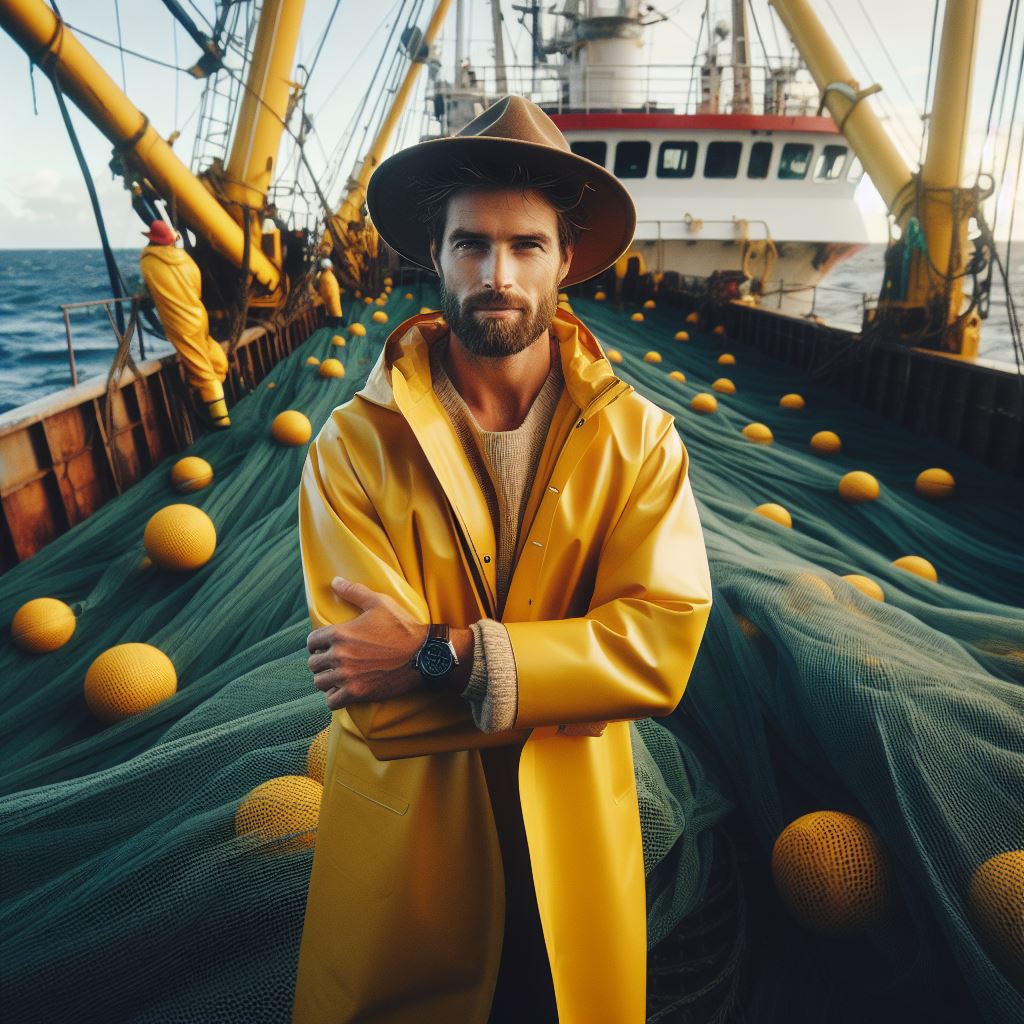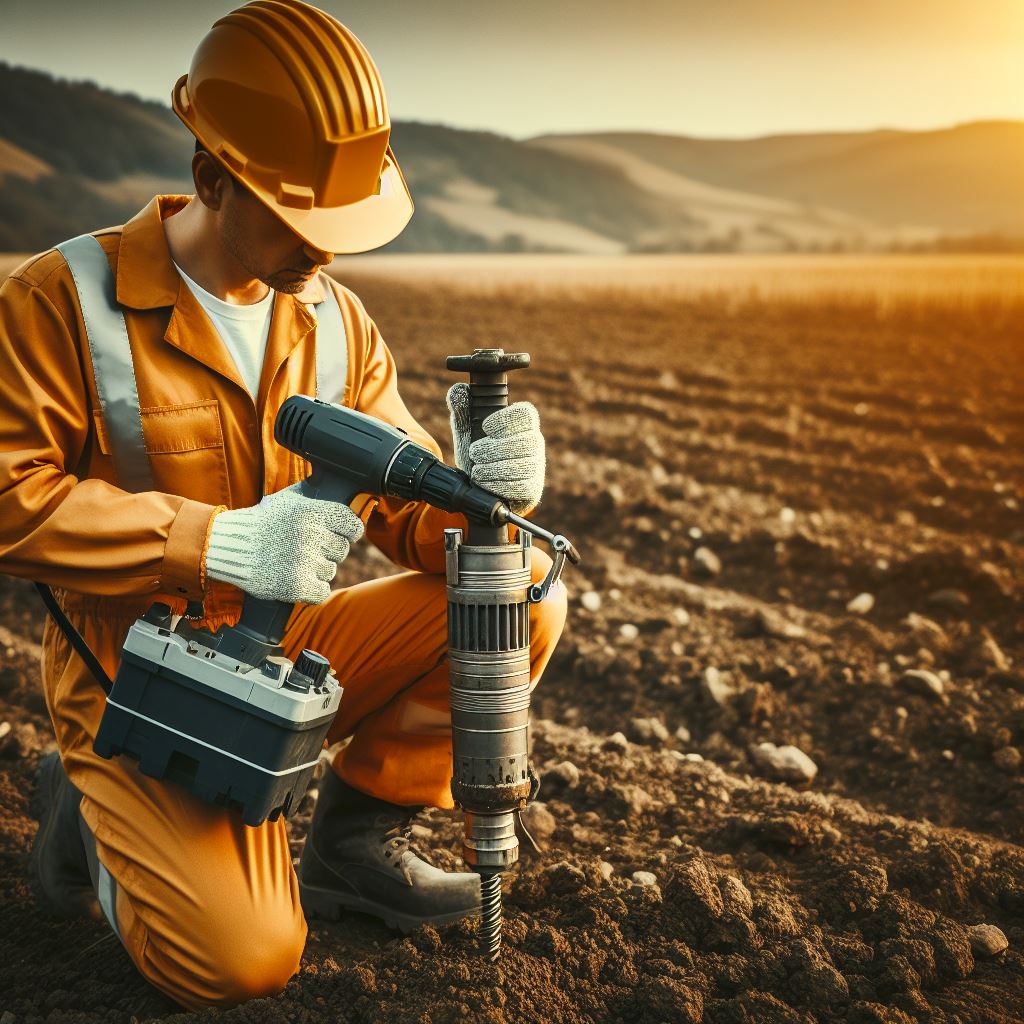Introduction
In the dynamic ecosystem of Australia’s climate, fishermen encounter a myriad of challenges that impact their livelihoods and the sustainability of the fishing industry.
The rugged coastlines and unpredictable weather patterns pose formidable obstacles, testing the resilience and adaptability of those who rely on the sea for their livelihoods.
Navigating the vast expanse of Australia’s coastline presents a daunting task for fishermen, who must contend with fluctuating weather conditions, dwindling fish stocks, and regulatory pressures.
From cyclones and storms in the north to unpredictable currents and temperature variations in the south, fishermen grapple with a range of environmental factors that influence their catch and safety at sea.
The fishing industry holds a paramount position within Australia’s economy and cultural fabric, contributing significantly to food security, employment, and coastal communities’ socio-economic well-being.
Beyond its economic significance, fishing plays a vital role in sustaining traditional practices and preserving Australia’s rich maritime heritage.
This blog post endeavors to shed light on the multifaceted challenges faced by fishermen in Australia’s climate and their implications for the fishing industry.
By delving into the complexities of this dynamic sector, we aim to foster a deeper understanding of the environmental, economic, and social factors shaping the lives of fishermen.
Through this exploration, we seek to advocate for sustainable practices and policies that support the resilience and viability of Australia’s fishing communities in the face of evolving climate conditions.
Join us on this enlightening journey as we navigate the turbulent waters of Australia’s fishing industry and uncover the stories of resilience, adaptation, and determination that define the lives of its fishermen.
Overview of Australia’s Climate
Geographical diversity of Australia
Australia is a vast continent with diverse landscapes, including coasts, mountains, deserts, and rainforests.
Impact of Australia’s climate on fishing activities
Australia’s climate greatly affects fishing activities due to its variability and extreme weather conditions.
- Cyclones: Coastal regions of Northern Australia are prone to cyclones, which can disrupt fishing operations and pose safety risks.
- Droughts: Extended periods of drought decrease water levels in rivers and lakes, reducing fish populations and impacting fishing opportunities.
- Heatwaves: Heatwaves can cause water temperatures to rise, adversely affecting fish habitats and making it challenging for fishermen to find fish.
- Flooding: Intense rainfall and flooding events can flush pollutants into waterways, affecting fish health and making fishing unsafe.
Key climate-related factors affecting fishermen
- Ocean currents: The warm Leeuwin Current in Western Australia influences the distribution of fish species, making it necessary for fishermen to adapt their methods accordingly.
- El Niño & La Niña:These climatic events have significant implications for fishing as they affect water temperatures and nutrient availability, impacting fish populations.
- Sea temperature changes: Rapid warming or cooling of ocean waters can cause fish to migrate or change their feeding patterns, making it challenging for fishermen to locate them.
- Acidification: Increased carbon dioxide absorption by the oceans leads to acidification, which can harm shellfish and other marine organisms, disrupting the ecosystem and fishing industry.
- Coral bleaching: Rising sea temperatures can cause coral bleaching, damaging vital fish habitats like the Great Barrier Reef and reducing fish populations.
In essence, Australia’s diverse geography, combined with its variable climate, presents unique challenges for fishermen.
To navigate these challenges, fishermen must stay abreast of weather patterns, adapt their techniques, and promote sustainable fishing practices.
By understanding the impact of Australia’s climate on fishing activities, we can work towards preserving this valuable industry while ensuring the long-term health of marine ecosystems.
Read: Youth in Farming: Australia’s New Generation
Changing Weather Patterns
Variability of weather conditions across Australia
Australia experiences a wide range of weather conditions due to its vast size and diverse geographical landscapes.
- The northern region of Australia, including the tropical regions, experiences a wet and dry season.
- The southern coast experiences a Mediterranean climate with cool, wet winters and hot, dry summers.
- Inland regions, such as the Outback, have a arid or semi-arid climate with extreme temperature variations.
- Coastal areas often experience strong ocean winds and frequent storms.
Impact of unpredictable weather patterns on fishermen
Fishermen in Australia face significant challenges due to the unpredictable and changing weather patterns.
- Unforeseen storms can pose dangers to fishermen at sea, risking their safety and lives.
- Unpredictable wind patterns can make it difficult for fishermen to navigate and control their boats.
- Sudden changes in weather conditions can disrupt fishing schedules, leading to financial losses for fishermen.
- Extreme heatwaves or cold fronts can affect the behavior and abundance of fish, making it harder for fishermen to catch them.
Examples of extreme weather events affecting fishing operations
- Cyclones: Tropical cyclones can cause massive disruptions to fishing activities along the northern coast, with strong winds and heavy rainfall.
- Floods: Severe flooding can contaminate waterways, affecting fish habitats and making it unsafe for fishermen to operate.
- Drought: Prolonged droughts reduce water levels in rivers and lakes, reducing fish populations and limiting fishing opportunities.
- Heatwaves: High temperatures and heatwaves can cause thermal stress to fish, leading to mass fish deaths and affecting the fishing industry.
- Bushfires: Wildfires can have an indirect impact on fishing, as they can affect water quality and the overall ecosystem of aquatic environments.
Despite these challenges, Australian fishermen have adapted to the changing weather patterns and developed strategies to mitigate their impact.
- They closely monitor weather forecasts to make informed decisions about fishing trips.
- Fishermen invest in advanced equipment, such as radar systems, to track weather patterns and detect approaching storms.
- They practice flexible fishing techniques, such as switching fishing locations or targeting different species depending on the weather conditions.
- Many fishermen have diversified their income sources by engaging in other activities during unfavorable weather conditions, such as boat maintenance or tourism-related services.
- Government agencies and fishing associations provide support and resources to help fishermen cope with the challenges posed by changing weather patterns.
In general, the variability of weather conditions across Australia significantly affects fishermen. Unpredictable weather patterns, coupled with extreme events, create risks to their safety, impact fishing operations, and disrupt fish populations.
However, through adaptation and resilience, Australian fishermen continue to navigate these challenges and contribute to the sustainable fishing industry.
Read: Farm-to-Table Movement: An Australian Perspective
Seasonal Changes and Fish Migration
Seasonal changes in Australia’s climate and how it relates to fishing
- Australia experiences distinct seasonal changes with variations in temperature and weather conditions.
- During summer, the temperatures rise and fishing is popular in coastal areas.
- Autumn brings milder temperatures and is suitable for deep-sea fishing.
- Winter is colder, and many fish species migrate to warmer waters, making fishing challenging.
- Spring brings moderate temperatures and is ideal for freshwater fishing in rivers and lakes.
Effect of fish migration patterns on fishermen’s catch
- Fish migration is a natural phenomenon where fish move to different locations in search of food, breeding grounds, or favorable temperatures.
- Understanding fish migration patterns is crucial for fishermen as it helps them locate fish-rich areas.
- When fish migrate, fishermen may experience a significant increase or decrease in their catch, depending on their ability to adapt.
- Successful fishermen adapt their fishing strategies and follow fish migration patterns to maximize their catch.
- Changes in fish migration patterns can also indicate environmental shifts, indirectly affecting fishermen’s livelihood.
Challenges faced by fishermen due to the unpredictability of fish movements
- Fishermen face challenges due to the unpredictable nature of fish movements during migration.
- Fishermen may spend hours or days searching for fish that have migrated to a different location.
- Unpredictable fish movements make it difficult to plan fishing trips and can lead to financial losses.
- Fishermen often rely on historical data, local knowledge, and weather patterns to predict fish movements.
- Climate change and fluctuating ocean temperatures can disrupt traditional fish migration patterns, posing additional challenges for fishermen.
In a nutshell, Australia’s climate exhibits seasonal changes, impacting fishing activities. Fishermen need to understand fish migration patterns to optimize their catch.
However, the unpredictability of fish movements presents challenges, requiring fishermen to adapt their strategies and rely on various sources of information to keep up with these changes.
Read: Indigenous Farming Techniques in Australia

Ocean Currents and Swells
The Significance of Ocean Currents and Swells in Fishing Activities
- Ocean currents and swells play a crucial role in determining the distribution and movement of fish.
- They help create nutrient-rich areas where fish thrive, attracting fishermen to those areas.
- The knowledge of currents and swells allows fishermen to plan their fishing trips strategically.
- Understanding these natural phenomena helps fishermen locate productive fishing grounds and increase their catch.
How Australia’s Climate Influences the Dynamics of Ocean Currents
- Australia’s climate, with its vast coastline and varying temperatures, affects ocean currents.
- The warm currents in the north and cold currents in the south significantly impact fishing conditions.
- The East Australian Current, for instance, brings warm waters to the east coast, supporting diverse marine life.
- El Niño and La Niña events also influence ocean currents, impacting fishing patterns and fish distribution.
- Climate change can lead to shifts in ocean currents, altering fishing conditions and the abundance of fish.
The Challenges Fishermen Face Due to Strong Currents and Swells
- Strong ocean currents and swells can pose risks to the safety of fishermen.
- They can make navigation more challenging and increase the likelihood of accidents at sea.
- Fishing gear can be damaged or lost in turbulent waters, leading to financial losses for fishermen.
- The unpredictability of currents and swells makes it harder for fishermen to consistently locate fish.
- Fishermen must adapt their fishing techniques and strategies to cope with changing current patterns.
- Unfavorable currents can make it difficult for fishermen to return to shore, leading to longer trips.
- Strong swells can result in rough sea conditions, making it uncomfortable and dangerous for fishermen.
- The intensity of swells can make it harder to keep the fishing boats stable, affecting fishing operations.
- Lower catch rates may occur when strong currents scatter fish populations, making them harder to find.
- Fishermen must prioritize safety, stay informed about current conditions, and be prepared for unexpected challenges.
In review, ocean currents and swells are tremendously influential in fishing activities.
Understanding their significance, how Australia’s climate shapes them, and the challenges they pose to fishermen is crucial for successful and safe fishing operations.
By adapting to these conditions, fishermen can enhance their catch and mitigate potential risks.
Your Personalized Career Strategy
Unlock your potential with tailored career consulting. Get clear, actionable steps designed for your success. Start now!
Get StartedUncover the Details: Modern Tech in Australia’s Fishing Industry
Delve into the Subject: Agri Science Internships: Aussie Tips
Environmental Factors and Ecosystem Health
Impact of Climate Change and Other Environmental Factors on Fishing
- Climate change poses significant challenges for fishermen, altering ocean currents and temperatures.
- Increasing seawater acidity due to climate change can harm shellfish populations and coral reefs.
- Rising sea levels can lead to the loss of coastal habitat and disruption of fishing practices.
- Extreme weather events, such as hurricanes and cyclones, can damage fishing infrastructure and vessels.
- Pollution from industrial and agricultural activities affects water quality, leading to contamination of fish.
- Invasive species, introduced by human activities, can outcompete native fish species, disrupting ecosystems.
- Overfishing caused by unsustainable practices threatens the balance of marine ecosystems.
- Habitat destruction, including coastal development and destructive fishing techniques, further diminishes fish populations.
Changes in Water Temperature and Quality Affect Fish Populations
- Warmer water temperatures can force fish to migrate to cooler areas, impacting traditional fishing grounds.
- Cold water species may decline in numbers as their suitable habitat becomes less available.
- Changes in water quality, such as increased nutrient runoff, can lead to harmful algal blooms, suffocating fish.
- Low oxygen levels caused by water pollution can result in fish kills and reduced fish populations.
- Acidic waters, a consequence of climate change, can disrupt the reproductive cycles of some fish species.
Efforts to Address Ecosystem Health Issues and Mitigate Impact on Fishermen
- Government agencies, such as the Department of Agriculture and Water Resources, collaborate with fishermen to develop sustainable fishing practices.
- Support is provided to fishermen to adopt advanced technologies that reduce fuel consumption and bycatch.
- Efforts are underway to restore and protect critical fish habitats, including seagrass beds and coral reefs.
- Fisheries management plans are implemented to set catch limits and promote responsible fishing practices.
- Research initiatives focus on understanding the impacts of climate change on fish populations and developing adaptation strategies.
- Education and awareness programs are conducted to promote sustainable fishing practices among fishermen.
- Collaboration between scientists, fishermen, and policymakers is encouraged to implement effective conservation strategies.
- Financial incentives are provided to fishermen who adopt sustainable practices and actively contribute to ecosystem health.
In fact, climate change and other environmental factors significantly affect fishing in Australia. The changing water temperature, declining water quality, and habitat destruction pose challenges to fish populations and the livelihood of fishermen.
However, efforts to address these issues, promote sustainable practices, mitigate impacts, and restore ecosystems give hope for a sustainable fishing future in Australia.
It is crucial for stakeholders to collaborate and prioritize the protection of the marine environment and the well-being of fishermen.
Read: The Economics of Farming in Australia Unveiled
See Related Content: Pest Control: Enviro Manager’s Strategies in AU
Technological Solutions and Adaptation
Technological advancements have greatly aided fishermen in coping with climate challenges
- Utilization of advanced weather forecasting systems to predict changing weather patterns.
- Development of GPS navigational systems for efficient and safe navigation on the waters.
- Installation of high-resolution sonar systems to locate fish populations accurately.
- Implementation of underwater drones for ocean floor mapping and fishing site identification.
- Integration of remote monitoring systems to track fishing activities, catch rates, and environmental conditions.
- Adoption of satellite communication devices for improved communication between fishing vessels and shore authorities.
- Use of automated sorting and processing technologies to ensure efficient fish handling and quality control.
- Employment of refrigeration and freezing systems to preserve catch freshness on extended trips.
- Introduction of fish tagging technologies to monitor migration patterns and estimate fish stocks.
- Implementation of digital platforms to streamline trade and market information exchange.
Innovative fishing techniques and equipment are employed to address climate-related issues
- Switching to low-impact fishing methods such as longlining or handlining to reduce habitat damage.
- Utilizing fish aggregating devices (FADs) to enhance catch efficiency and target specific species.
- Deploying modified fishing gear like escape gaps or turtle excluder devices (TEDs) to minimize bycatch.
- Adopting eco-friendly fishing practices like electric reels or hydraulic systems to reduce carbon emissions.
- Integration of underwater cameras and drones for real-time fish behavior observation and stock assessment.
- Using modified nets with smaller mesh sizes to prevent the capture of undersized or juvenile fish.
- Employing hooks with barbless designs to facilitate quick and safe catch release.
Adaptation strategies and knowledge sharing are vital in the fishing industry
- Fishermen need to stay informed about changing environmental conditions and adapt their fishing activities accordingly.
- Sharing local knowledge and traditional fishing practices helps in understanding the impact of climate change.
- Collaborative research projects enable the development of effective climate change adaptation strategies.
- Training programs and workshops educate fishermen about sustainable practices and climate resilience.
- Establishment of industry networks and forums promotes knowledge exchange and innovation.
- Government support through funding and policy frameworks encourages the adoption of technological solutions.
- Partnerships with scientific institutions facilitate the integration of research findings into practical fishing applications.
- Regular consultation between fishermen, fisheries management organizations, and scientists is crucial for effective decision-making.
- Continuous monitoring and evaluation of adaptation measures help identify successful practices and areas for improvement.
- Creating international collaborations allows sharing of experiences and best practices from diverse fishing regions.
Conclusion
In summary, this blog post has provided a comprehensive examination of the challenges faced by fishermen in Australia due to the country’s climate.
We explored the impacts of climate change on fishing communities, highlighting the importance of sustainable practices.
Throughout the discussion, we emphasized the significant challenges that fishermen encounter as a result of Australia’s climate variability.
From unpredictable weather patterns to dwindling fish stocks, these obstacles pose a formidable barrier to the livelihoods of those dependent on the fishing industry.
As we conclude, it is imperative to recognize the urgent need for action to support sustainable fishing practices and mitigate the effects of climate change.
By advocating for policies that promote responsible fishing methods and investing in initiatives aimed at addressing climate change, we can safeguard the future of fishing communities and preserve marine ecosystems for generations to come.
Join us in our call to action to protect our oceans and support the resilience of fishermen in the face of environmental challenges.
Together, we can make a meaningful difference in building a sustainable future for both people and the planet.




